Blog
Best Music-Making Software for 2024: AI-Powered Tools and More
29 Dec '2023
Explore the latest AI-powered music production tools, from samplers and synths to plugins, as we delve into groundbreaking platforms.
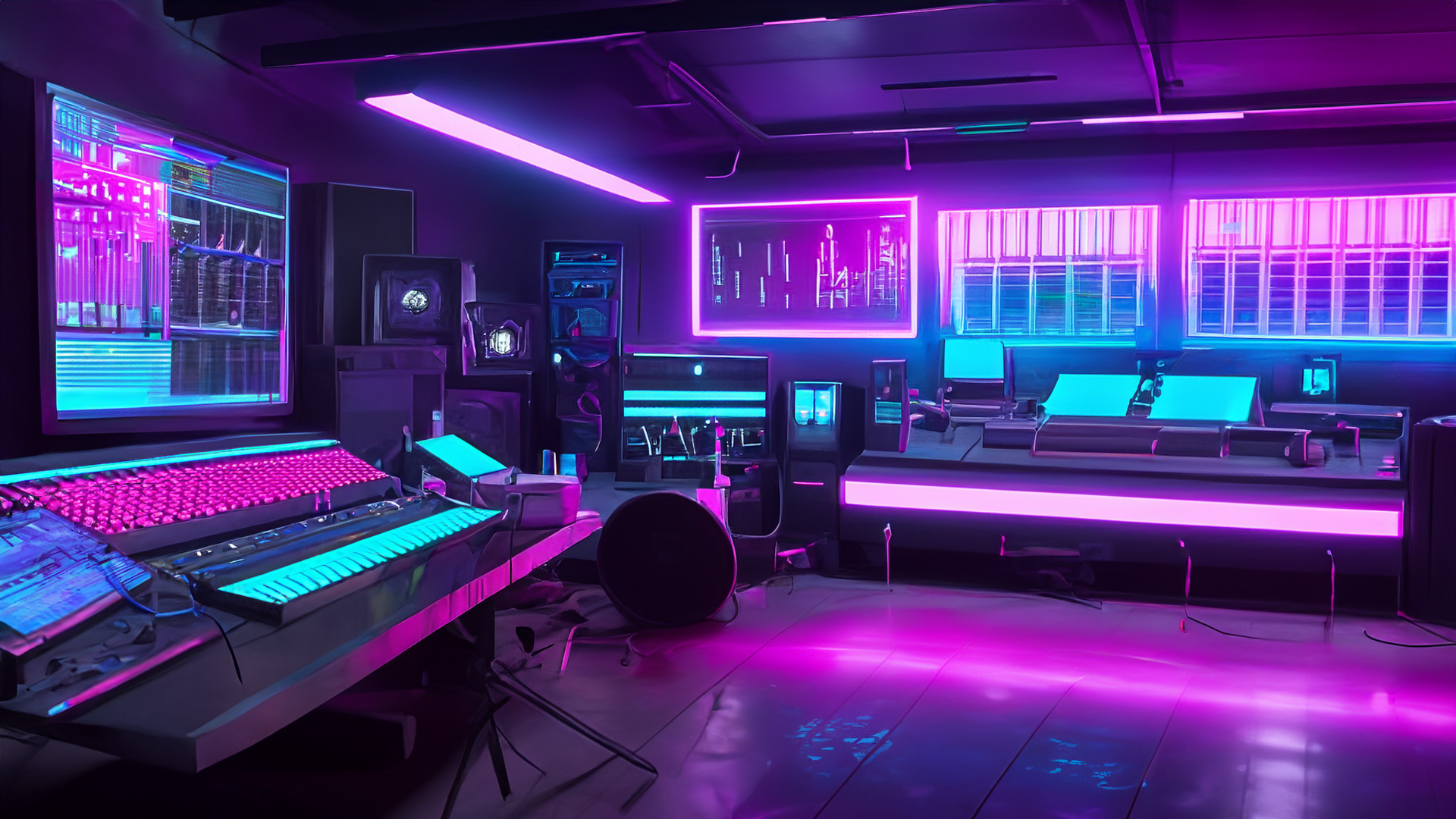
Samplers, synths, plugins: all of these things probably take up quite a bit of your physical space, time and budget. And who can blame you? With so many new and exciting technological advancements in the world of music production, it’s almost impossible for a month to go by without adding a new bit of gear to your “dream studio” list.
We have searched for what are arguably some of the most exciting and (more importantly) game-changing tools for music creation and performance. Using new technology, or being able to take existing tech and put it into a new, more practical, and engaging interface, these pieces of equipment will change your approach to workflow and improve your creative output quality.
Best AI Software for Making Music
1. Voice-swap
5. Mawf
1. Voice-swap
Completely transform your singing voice using AI
Specifications and Features
• Founded by multi-platinum producers DJ Fresh and Nico Pellerin and approved by many other highly acclaimed producers, including Skream, Diplo, Beardyman, and more
• Voice-Swap features a wide range of vocalist presets utilising the actual voices of many real-life artists, who’ve given their permission for their copyright to be used
• Important to be aware that you cannot release Voice-Swap-generated audio without buying a licence, due to copyright laws
Pros
• Free 60 seconds of audio credit is available to use, after which you will need to select a monthly or yearly subscription
• Quick response times (within 48 hours) from artists for licensing to release your tracks
• Wide range of talented, successful and varied artists to choose from and collaborate with to suit your tracks
Cons
• Takes time to familiarise oneself with the app and requires prior knowledge of pitch correction and other areas of music theory
Voice-swap promises to give anyone the power to write vocal lines and then have them performed by professional vocalists. It was developed by DJ Fresh and Nico Pellerin to help producers, artists and writers who don't want to use their voice on songs use AI to transform their voice.
Voice-swap has a library of voices of professional singers that you can use to perform on one of your own tracks. You can use the voices to write demos or buy a license that grants you the ability to release your song commercially. This is great as it compensates the original vocalist for the use of their voice.
Declan McGlynn from Voice-swap told us a little more about the project.
“Voice-Swap is a groundbreaking new platform that allows anyone to transform their singing voice by harnessing the power of artificial intelligence. We’ve worked with professional singers to create and license vocal models, ensuring that both the training data used and the final outputs are of the highest quality, and suitable for pro studio use.
“We wanted to create a platform that compensated artists and singers appropriately, so we offer a 50/50 split of subscription revenue. We also offer a bespoke watermarking technology that helps us trace every output back to a specific user. On top of that, anything a user wants to release officially has to be approved by the singer they’ve modelled".
“The creative potential of this technology is mind-blowing, and the use cases are vast, but it’s important to put the right guardrails in place first. Once we do, we can start to get excited about how the tech can change the music industry from helping songwriting sessions and A&R teams write demos to transforming remote collaboration and creating a whole new form of sampling and sample creation.
“Voice-Swap offers both the highest quality models and an artist-first approach to AI, setting the tone for what we believe to be the future of music creation.”
2. sonible smart:gate
A revolutionary noise gate built using artificial intelligence
Specifications and Features
• Hyper-target instrument type using sophisticated AI algorithm to isolate audio
• Further target audio using traditional gate controls (Threshold, Attack, Release, Hold, & Tolerance)
• Advanced further controls unique to smart:gate (three-band intensity controls: Low, Mid, and High, as well as Impact and Level bias)
• Mono/Mid and Side detection for targeting different areas of the stereo field
• Ext Sidechain input with two modes: Gating and Ducking – making smart:gate a handy sidechaining assistant
Pros
• Offers a vast range of AI algorithm profiles to target different instrument types
• Free 30-day trial available
• Makes audio gating simple for those with less experience
• Can also be used without AI as a traditional audio gate if preferred
Cons
• There are not really any downsides to this noise gate, it’s one of the best available on the market
Sonible is renowned for using artificial intelligence to level up many types of audio processors. They’ve already been responsible for advances in compression technology with smart:comp and smart:comp 2, equaliser technology with smart:EQ 3, and reverb with smart:reverb. This year they have turned their attention to the audio gate with smart:gate.
The audio gate may not be the sexiest of audio processors. However, this actually makes the gate a prime candidate for a makeover.
smart:gate uses artificial intelligence to identify instrument and voice elements in audio and then gate out unwanted elements. Users can set which instrument they want to be allowed through.
This removes problems such as bleed between drum mics which can sometimes get through traditional gates.
3. Sessionwire Studio
Virtual studio platform with remote music collaboration features
Specifications and Features
• Collaborate with other musicians remotely, share and work on DAW projects simultaneously
• A wide range of features for music professionals to streamline all aspects of the production process including music creation, recording, mixing, reviewing, and approving; all entirely online
• HD lossless audio streaming to ensure all collaborators can hear the music in full detail
Pros
• As online music collaboration becomes increasingly popular post-pandemic, the platform enables music collaborators to create and produce music wherever they are, without having to compromise audio quality
• Allows collaborators to keep all their work, communication, and files in one central place so they are easily trackable, shareable, and accessible
• Offers free ‘Creator’ accounts that allow users to access certain features, including audio and video files, without having to invest in the platform
Cons
• Technically, you can achieve similar results using other platforms, such as Zoom, and Dropbox. Sessionwire just allows you to streamline all areas of remote work into one central hub and ensures files can be shared at professional quality, without audio degradation
Sessionwire Studio is a next generation with the power to transform how musicians collaborate with one another.
Remote working has become the new norm. Tools like Zoom, Microsoft Teams and Google Workspace have enabled workers to be located anywhere in the world and still perform their jobs to the best of their ability. However, music production is one area where this has not been the case.
There are many things standing in the way of remote music collaboration. Perhaps the biggest problem for remote musical collaboration is technology.
Limitations in video call technology create major problems in the music production process. The most significant problem faced by remote music production is audio quality. Video calls compress audio and video in order to stop calls from buffering. This is obviously a problem when recording professional audio.
Sessionwire fixes this. It has studio-quality audio streaming designed for music pros. Sessionwire is essentially a virtual studio which has live video, voice, text, file transfer, storage and HQ Audio all designed specifically for music collaborators. It even has talkback and live streaming.
If you’re a producer looking for remote collaboration tools, why not give it a try?
4. Acon Digital Remix
Real-time separation of stems
Specifications and Features
• Enables real-time separation of audio stems and full mixing control over each element
• Works directly from DAW–insert a full mix onto one track, and gain mixing controls over each element using an instance of Acon Digital Remix
Pros
• Separates stems, also known as instrument groups, in real-time
• Provides controls additionally to its stem separation, such as remixing, sensitivity controls, automation, and the ability to separate stem outputs
Cons
• Only five stems can be separated: Vocals, Piano, Bass, Drums, and Other (any instrumental elements that don’t fall into the previous four categories appear in the Other stem)
• Due to drums being a single stem, you cannot isolate individual drum elements
• The real-time stem mixing requires a lot of processing power, causing latency issues, however, you can always consolidate (re-export) your remix, once completed
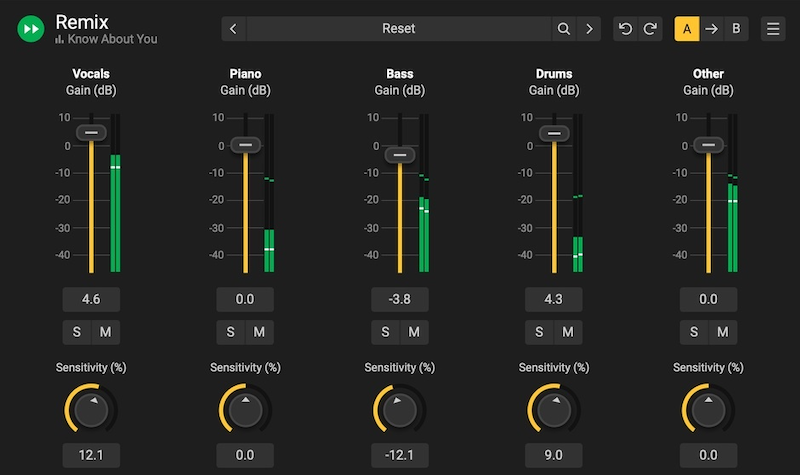
Stem separation isn’t a new technology. Developers have been putting out software for years which is able to analyse a mixdown and separate it into its constituent components.
However, up until now stem separation tools have not been able to separate stems in real time. Instead they have had to process audio files and then output the constituent stems as separate audio files. Now that has all changed with the introduction of Acon Digital Remix.
Acon Digital Remix is the first plugin that is capable of performing real-time stem separation. Simply load a WAV in your DAW, press play and Remix will immediately separate the file into five separate stems. You can solo and mute stems in real-time, adjust the gain, and also adjust the level of separation.
This is an exciting step forward in the world of stem separation and makes the workflow a lot smoother. We can only assume other developers will continue to push this tech in exciting directions, taking us ever closer to perfect stem separation!
5. Mawf
Morph any sound into musical instruments using Mawf’s AI
Specifications and Features
• Founded and developed by ByteDance, the company behind TikTok
• Completely FREE
• Mawf uses machine learning to manipulate and morph (hence the name) incoming audio into realistic instrument sounds
Pros
• You can use Mawf for various purposes to improve existing sounds or create new sounds with virtual instruments
• The synthesiser is completely free to download and use if you’re outside the US
• The AI has been trained using real musical instruments to ensure hyper-realistic results–hum a melody into the app, and watch it be turned into a realistic trumpet or piano piece
Cons
• Relatively small range of instruments to choose from, however, will likely expand and grow in due time.
• Still in beta-testing phase so contains many glitches and imperfections
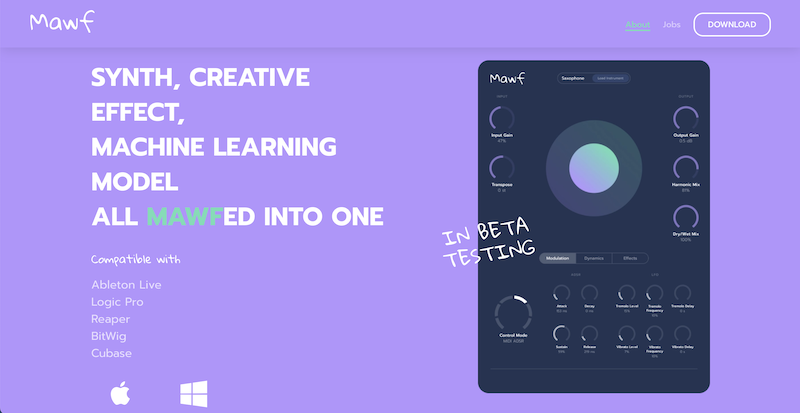
Mawf is a cool little tool that allows for some cutting-edge creativity, giving producers access to sounds they have never had before. Mawf can analyse incoming audio and then re-render that audio as a different instrument. This is done using machine learning models of various instruments.
For example, Mawf allows you to turn a sung vocal line into a saxophone, or a guitar into a trumpet. You can also get creative by feeding Mawf non-instrument recordings and then turning them into instruments. We’re sure there will be plenty of experimentation and new sounds created with technology like this in years to come.
How to choose new music-making software
The world of music-making is chock-full of possibility and creative potential. As an artistic field, music might just rely on technology more so than any other creative avenue. Because of the wide range of technology and practical applications of music, it can be difficult to know what software to opt for in your specific case, especially if you’re just getting started. Let us give you some tips on what to consider.
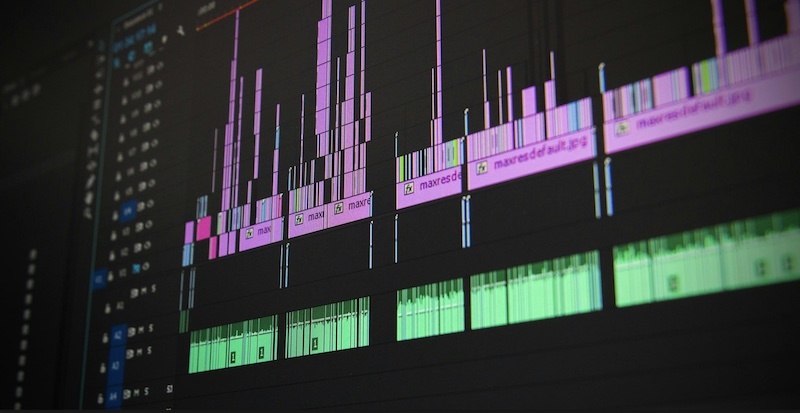
As previously mentioned, there are so many different areas of music production that you could potentially be getting into; perhaps you write classical scores, maybe you’re a lo-fi producer making chill study playlists, or you could be composing soundtracks for film and media. What about sound design for video games? The possibilities are endless!
No matter the specific niche you might be working in, one thing’s for certain, you’re going to need a DAW (Digital Audio Workstation) and there’s a whole host to choose from. If you’re a Mac user, Logic Pro is probably your best bet; if you’re a hip-hop head looking to bosh out beats on the fly, maybe FL Studio is the optimal choice for you. If you want a solid all-round DAW, with outstanding live functionality, Ableton is the right pick. There’s also Cubase and Studio One in the conversation for pro-level DAWs. Pro Tools is the industry-standard DAW, however, it also happens to be one of the hardest to learn.
Whichever DAW you choose, they can all achieve the same results, there are just slight differences in the way they work. We recommend choosing a suitable DAW, based on your circumstance, and sticking with it through all of the highs and lows, until you’re familiar with it on an intimate level. Then, you’ll have enough knowledge to delve into other softwares and transfer your experience.
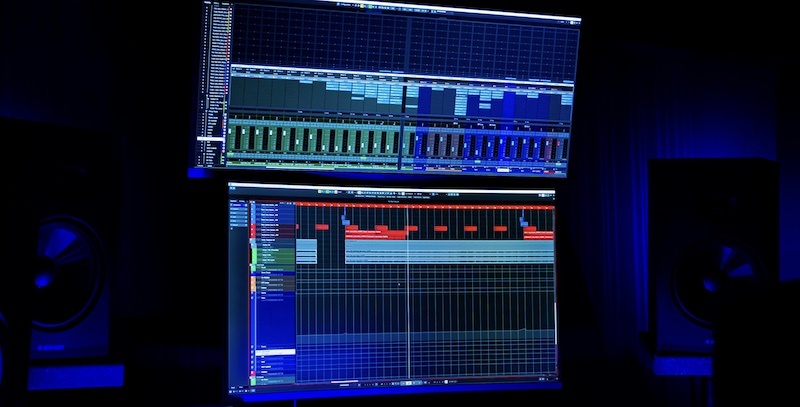
Feel free to do a bit of research on the main ones we mentioned, check out the price points and what’s included, and go from there. Maybe watch a few YouTube tutorials and see which one catches your eye. After all, you’re going to be spending a lot of time getting to know your DAW, so it’s important to feel connected to it.
Once you’ve chosen your DAW, you can get into the nitty-gritty of different functions and third-party plugins that will best suit your needs. If you’re not familiar with music theory, tools like Scaler 2 and Instacomposer 2 can be game changers. If you’re regularly working with singers, you might want to pick up Autotune or Waves Real-Time for pitch correction. If you’re more likely to be designing sounds for media, tools like Krotos Studio and UVI Meteor can be highly helpful.
There are too many applications and use cases for us to go into further here, but hopefully, we’ve given you enough to sink your teeth into. The important thing is to enjoy the learning process and continue expanding your horizons in the vast sea of music creation!
Music technology is constantly evolving, which makes it a very exciting time to be a music producer. If you want to learn more about music technology, production techniques, and sampling be sure to check out the Loopcloud Blog. Here you’ll find articles on all facets of music production and technology.
If you’re a Loopcloud member, be sure to check out our one piece of cutting-edge technology: Loopcloud Sounds. Loopcloud Sounds is our first plugin which allows you to search for, audition, and purchase samples, all without leaving your DAW. It’s a workflow monster and totally free for those on any Loopcloud membership tier.
FAQs
Is AI generated music legal?
Yes, music that is totally AI-generated can – generally speaking – be used commercially without the need to own a license or pay royalties. A US court has ruled that music generated entirely by AI cannot be copyrighted. However, with AI being a new and recent technology, this sort of situation could change. There may also be technical reasons why a certain piece of music is still protected and not allowed to be used without permission: examples might include that it was partly created by a person without AI, or that it is derivative of another piece of music.
Can you use ChatGPT to make music?
ChatGPT has the ability to generate melodies, chord progressions, and even entire songs. There are also whole AI music websites, such as soundraw.io.
Can AI replace music producers?
It seems unlikely. The AI revolution is creating tools which are helping producers push the boundaries of creativity and innovation. AI is much more likely to progress humans ability to create music faster and to a more technical level.
Related articles
If you’re interested in music production tools that are using artificial intelligence to do exciting things, be sure to check out our articles on 10 AI Plugins Producers Need to Try Today, and 10 AI Sites Musicians Need to Know About

